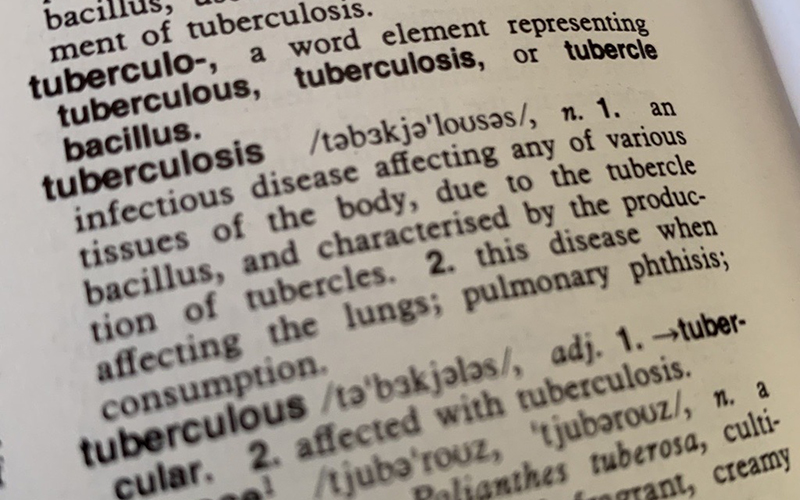Search
Research
Risk factors for diagnosis and treatment delay among patients with multidrug-resistant tuberculosis in Hunan Province, ChinaMultidrug-resistant tuberculosis (MDR-TB) is a global health threat associated with high morbidity and mortality rates. Diagnosis and treatment delays are associated with poor treatment outcomes in patients with MDR-TB. However, the risk factors associated with these delays are not robustly investigated, particularly in high TB burden countries such as China.
Research
Protocol for a systematic review of long-term physical sequelae and financial burden of multidrug-resistant and extensively drug-resistant tuberculosisMultidrug resistant (MDR) and extensively drug-resistant (XDR) tuberculosis (TB) are major public health threats that are significant causes of physical sequelae and financial consequences for infected people. Treatment for MDR- and XDR-TB are more toxic and take longer duration than for drug-susceptible-TB. As a result, the long-term sequelae are thought to be more common among patients with MDR- and XDR-TB than drug-susceptible-TB, but this is yet to be quantified.
Research
Mapping tuberculosis prevalence in Ethiopia using geospatial meta-analysis\Reliable and detailed data on the prevalence of tuberculosis (TB) with sub-national estimates are scarce in Ethiopia. We address this knowledge gap by spatially predicting the national, sub-national and local prevalence of TB, and identifying drivers of TB prevalence across the country.
Research
The prevalence of tuberculosis, malaria and soil-transmitted helminth infection in minority indigenous people of Southeast Asia and the Western Pacific: protocol for a systematic review and meta-analysisInfectious diseases such as tuberculosis (TB), malaria and soil-transmitted helminthiasis continue to impose a significant global health burden and socio-economic impact. Globally, minority indigenous people are disproportionately affected by poverty and are shown to experience a disparate burden of disease and poorer health outcomes than the comparative majority population.
Research
Spatial co-distribution of tuberculosis prevalence and low BCG vaccination coverage in EthiopiaWhile bacille-calmette-guerin (BCG) vaccination is one of the recommended strategies for preventing tuberculosis, its coverage is low in several countries, including Ethiopia. This study investigated the spatial co-distribution and drivers of TB prevalence and low BCG coverage in Ethiopia.
Research
Estimating measures to reduce the transmission of SARS-CoV-2 in Australia to guide a ‘National Plan’ to reopeningThe availability of COVID-19 vaccines promised a reduction in the severity of disease and relief from the strict public health and social measures (PHSMs) imposed in many countries to limit spread and burden of COVID-19. We were asked to define vaccine coverage thresholds for Australia's transition to easing restrictions and reopening international borders.
Research
Prognostication of treatment non-compliance among patients with multidrug-resistant tuberculosis in the course of their follow-up: a logistic regression–based machine learning algorithmDrug compliance is the act of taking medication on schedule or taking medication as prescribed and obeying other medical instructions. It is the most crucial aspect in the treatment of chronic diseases particularly for patients with multidrug-resistant tuberculosis (MDR-TB). Drug non-compliance is the main reason for causing drug resistance and poor treatment outcomes.
Research
Population-Modifiable Risk Factors Associated With Childhood Stunting in Sub-Saharan AfricaIdentifying modifiable risk factors associated with childhood stunting in sub-Saharan Africa (SSA) is imperative for the development of evidence-based interventions and to achieve the Sustainable Development Goals. The objective was to evaluate key modifiable risk factors associated with childhood stunting in SSA.

News & Events
Prevention better than cure in race to slash rates of TBThe first global review of the effectiveness of current strategies to fight tuberculosis has found preventive therapy is the most effective intervention strategy.
Research
Mapping the prevalence of soil-transmitted helminth infections in the Western Pacific Region: a spatial modelling studySoil-Transmitted Helminth (STH) infections are a significant health issue in the Western Pacific Region (WPR). This study aims to produce high-resolution spatial prediction STH prevalence maps for the WPR.
